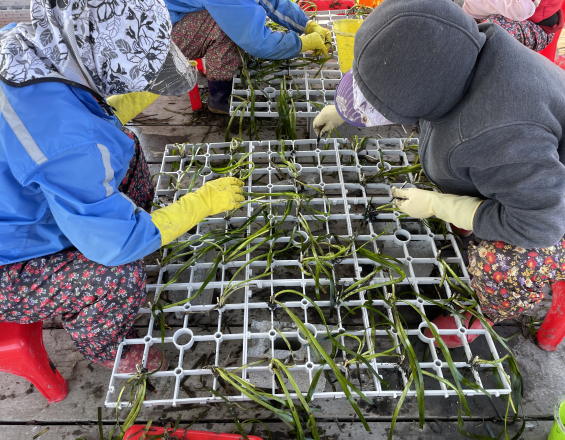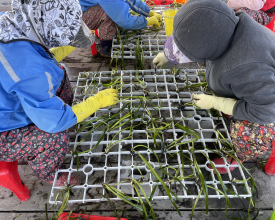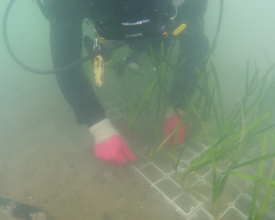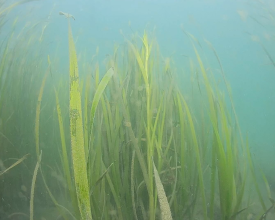
Restauración de praderas marinas con marcos de plantación ecológicos a base de bioplásticos biodegradables

La comunidad internacional aspira a la neutralidad de carbono para 2050, reconociendo la importancia del "carbono azul" en ecosistemas marinos como las praderas marinas. El Servicio de Parques Nacionales de Corea se dedica a mejorar la absorción de carbono mediante la restauración de la hierba marina en el Parque Nacional de Hallyeohaesang.
Desde 2018, los esfuerzos de restauración se enfrentan a desafíos con métodos de trasplante iniciales que muestran tasas de éxito variables. En 2021, se desarrolló un marco de plantación ecológico utilizando cartones de huevos de papel, pero resultó ineficaz. Al año siguiente, se introdujeron marcos de bioplástico biodegradables, pero eran demasiado ligeros y limitaban el crecimiento de la hierba marina.
En 2023, se creó un nuevo marco de plantación con bioplástico biodegradable de mayor densidad, que proporcionaba un espacio adecuado para la expansión de la pradera marina. Este marco se utilizó con éxito para restaurar las praderas marinas a lo largo de la costa de Daegopo.
Impactos
Como resultado del proyecto piloto con marcos de plantación ecológicos, comprobamos que los marcos se fijaban fácilmente al lecho marino y la tasa de supervivencia de la hierba marina aumentaba hasta el 162% seis meses después del trasplante. Los extensos lechos de hierba marina formados proporcionan hábitats cruciales para diversos organismos marinos y sirven de refugio seguro para peces juveniles.
Además, los marcos de plantación ecológicos están hechos de materiales bioplásticos biodegradables que se descomponen de forma natural, resolviendo así los problemas de eliminación de residuos.
El Servicio de Parques Nacionales de Corea se ha comprometido a continuar los proyectos de restauración ecológica con materiales bioplásticos biodegradables. Planeamos ampliar estos esfuerzos de restauración ecológica a otras zonas marinas, como marismas y dunas costeras.





